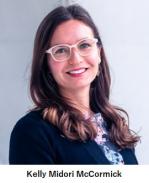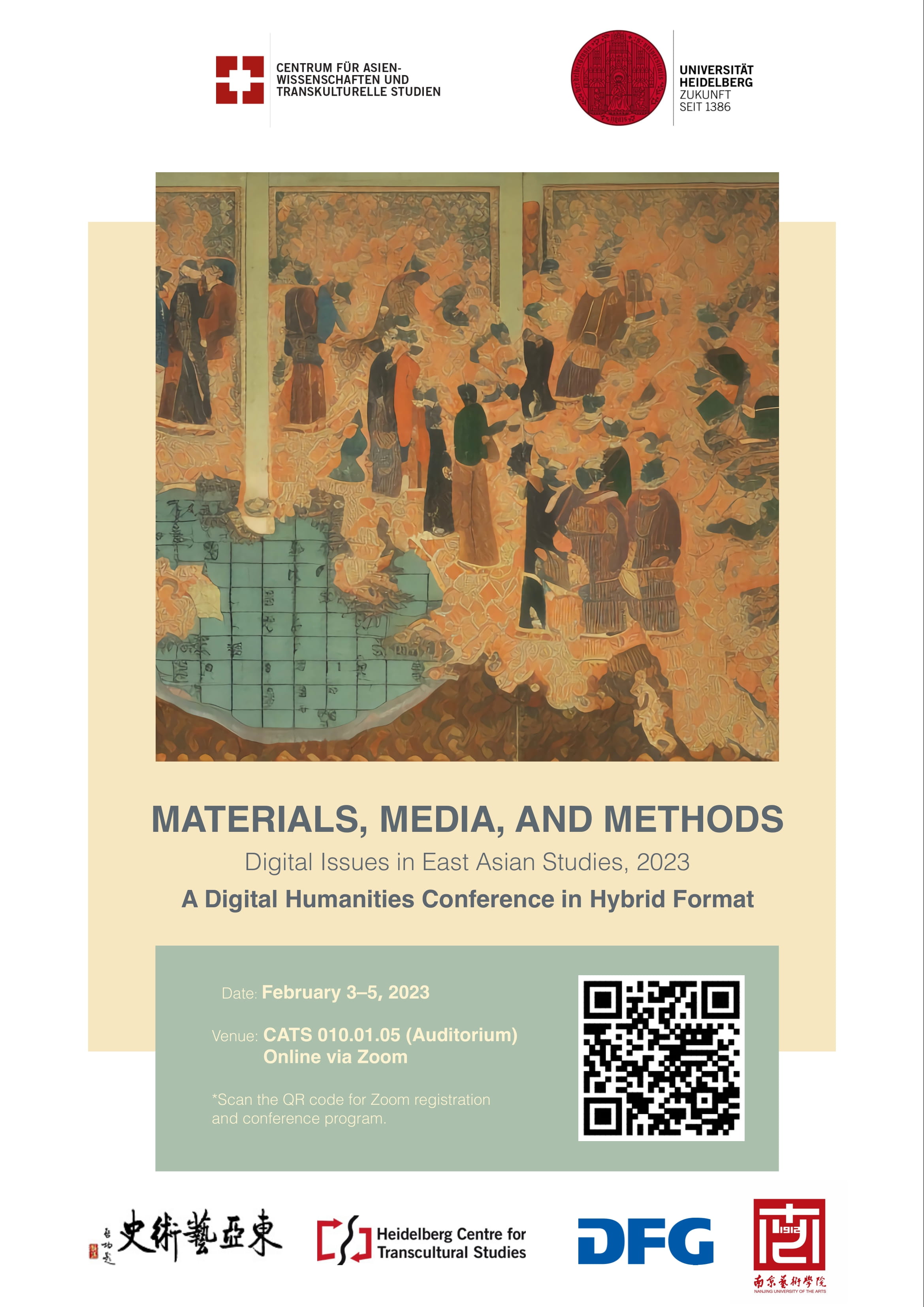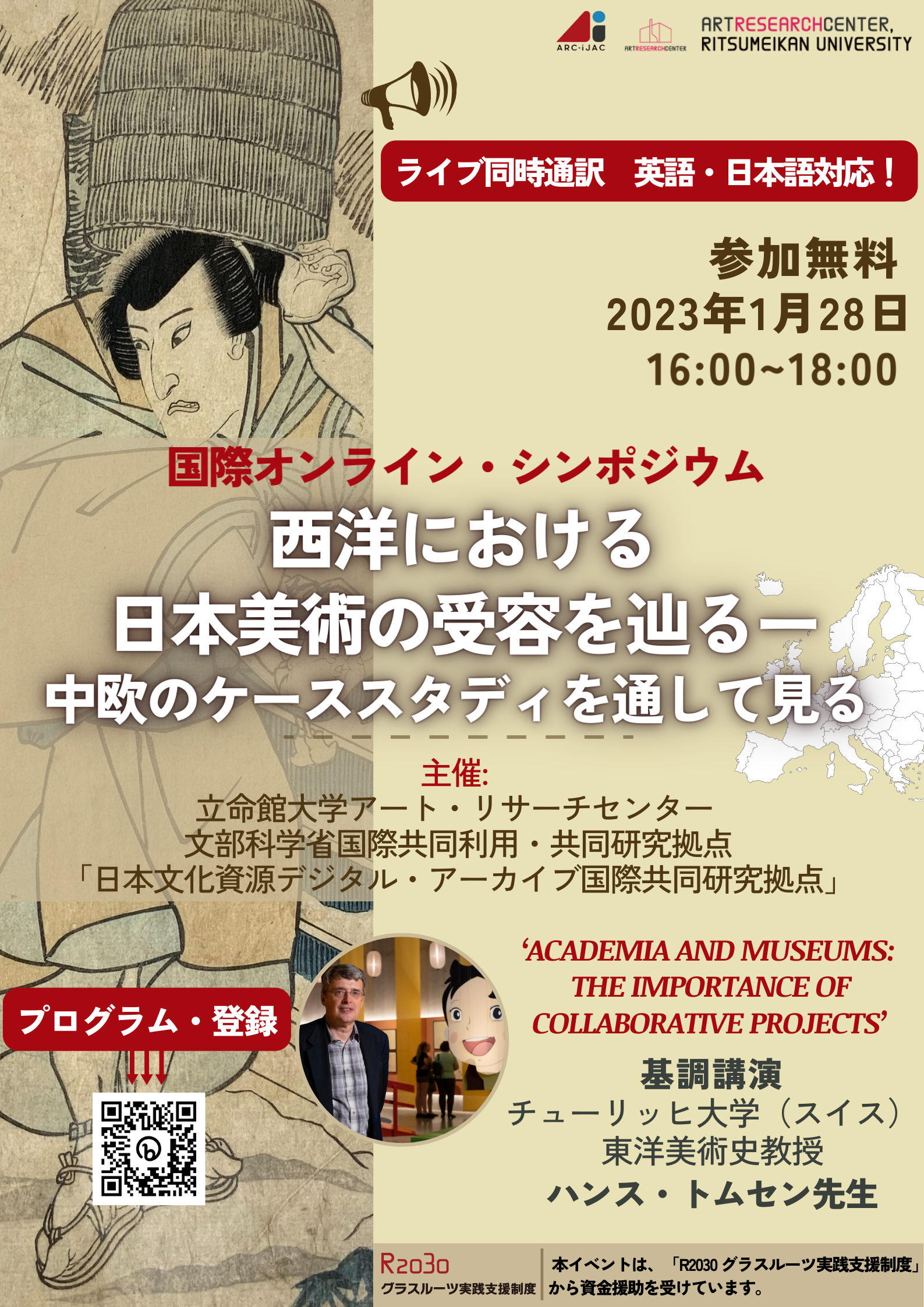-
 10
11
12
13
14
15
16
17
18
19
20
10
11
12
13
14
15
16
17
18
19
20

2023年2月18日(土)、知識・芸術・文化情報学研究会主催の第12回 「知識・芸術・文化情報学研究会」が、アート・ドキュメンテーション学会関西地区部会・情報知識学会関西部会共催、立命館大学アート・リサーチセンター 文部科学省 国際共同利用・共同研究拠点「日本文化資源デジタル・アーカイブ国際共同研究拠点」協力のもと開催されました。
またこの会は、ARC-iJACの若手研究者カンファレンスとして位置付けられています。
新型コロナウィルス感染症拡大防止のため、今回はZoomでの無料開催となりました。
「知識・芸術・文化情報学研究会」詳細:
昨今のデジタル・情報環境の急速な進展とともに、学術分野にも「情報」や「デジタル」を意識した分野横断型の研究が多く見受けられるようになってきました。大学の教育・研究活動においても、この傾向は強まっており、これに関連する教育プログラムやコースの活動が充実しています。
時代に即した新しい研究テーマのもと、このような課程で学ぶ学部生・大学院生や若手研究者が学術的な交流をする機会へのニーズはますます大きくなっています。
そのため、芸術・文化、およびその他の関連する分野の情報・知識研究に興味のある大学院生および若手研究者を主に意識し、発表・交流のための場として「知識・芸術・文化情報学研究会」を2011年度に発足させ、これまで11回の研究集会を開催しました。
本会は、異分野の人的交流を通じて、参加者相互が新たな研究テーマや方法を発見できる場と位置づけており、学会発表とはひと味違う萌芽的・冒険的な発表も歓迎します。■ 日時:2023年2月18日(土)13:00開始
■ 実施方法:オンライン開催(Zoom使用)
・発表募集ではハイブリッド開催としておりましたが、新型コロナウイルス感染状況を考慮し、完全オンラインで開催することとなりました。
・ アクセス方法は発表者および参加申し込みをいただいた方にメールでお知らせします。
・ 会場による開催はございませんのでご注意ください。主催:知識・芸術・文化情報学研究会
世話役〔五十音順〕:赤間亮(立命館大学)、阪田真己子(同志社大学)、田窪直規(近畿大学)、村川猛彦(和歌山大学)
共催:情報知識学会関西部会、アート・ドキュメンテーション学会関西地区部会
協力:立命館大学アート・リサーチセンター
文部科学省 国際共同利用・共同研究拠点「日本文化資源デジタル・アーカイブ国際共同研究拠点」■ 参加申し込み方法
【募集は終了しました】※ 参加費は無料です。
続きを読む>>
※研究発表会後に懇親会(オンライン開催、無料)を予定しています。大学や分野の枠を超えた交流の場にしたいと思いますので、あわせてご参加ください。2023年2月18日(土)に、第12回 知識・芸術・文化情報学研究会を開催します。
下記の通り第12回の研究集会の参加者申し込みを受け付けておりますので、奮ってご参加ください。
またこの会は、ARC-iJACの若手研究者カンファレンスとして位置付けられています。「知識・芸術・文化情報学研究会」詳細:
昨今のデジタル・情報環境の急速な進展とともに、学術分野にも「情報」や「デジタル」を意識した分野横断型の研究が多く見受けられるようになってきました。大学の教育・研究活動においても、この傾向は強まっており、これに関連する教育プログラムやコースの活動が充実しています。
時代に即した新しい研究テーマのもと、このような課程で学ぶ学部生・大学院生や若手研究者が学術的な交流をする機会へのニーズはますます大きくなっています。
そのため、芸術・文化、およびその他の関連する分野の情報・知識研究に興味のある大学院生および若手研究者を主に意識し、発表・交流のための場として「知識・芸術・文化情報学研究会」を2011年度に発足させ、これまで11回の研究集会を開催しました。
本会は、異分野の人的交流を通じて、参加者相互が新たな研究テーマや方法を発見できる場と位置づけており、学会発表とはひと味違う萌芽的・冒険的な発表も歓迎します。■ 日時:2023年2月18日(土)13:00開始
■ 実施方法:オンライン開催(Zoom使用)
・発表募集ではハイブリッド開催としておりましたが、新型コロナウイルス感染状況を考慮し、完全オンラインで開催することとなりました。
・ アクセス方法は発表者および参加申し込みをいただいた方にメールでお知らせします。
・ 会場による開催はございませんのでご注意ください。主催:知識・芸術・文化情報学研究会
世話役〔五十音順〕:赤間亮(立命館大学)、阪田真己子(同志社大学)、田窪直規(近畿大学)、村川猛彦(和歌山大学)
共催:情報知識学会関西部会、アート・ドキュメンテーション学会関西地区部会
協力:立命館大学アート・リサーチセンター
文部科学省 国際共同利用・共同研究拠点「日本文化資源デジタル・アーカイブ国際共同研究拠点」■ 参加申し込み方法
続きを読む>>
2023年2月15日(水)までに、 参加申し込みフォーム よりお申し込みください。
※ 参加費は無料です。
※研究発表会後に懇親会(オンライン開催、無料)を予定しています。大学や分野の枠を超えた交流の場にしたいと思いますので、あわせてご参加ください。立命館大学アート・リサーチセンター(以下ARC)と浮世絵木版画彫摺技術保存協会は、2011年2月、2015年2月、2019年6月、2022年2月に研修会の受け入れや共催を行うなど、長年の協力関係にあり、その中で彫摺技術に関する情報交換・意見交換を行ってきました。
当年度も下記の研修会を開催いたします。
この研修会は、専門家との情報交換を行い、ARC所蔵資料に対する理解の深化、拠点メンバーの彫摺技術に対する知見の深化を図ることを目的としています。日時:2023年2月17日(金)14:00~17:00
開催方法:オンライン開催(Zoom)
登壇者(話題提供者)・テーマ:
赤間亮(立命館大学アート・リサーチセンター センター長)
「海外の浮世絵コレクション紹介 欧州ドイツ編」
金子貴昭(立命館大学衣笠総合研究機構 准教授)
「立命館大学アート・リサーチセンターの板木コレクション」
松葉涼子(セインズベリー日本藝術研究所 Lecturer)
「Connecting Present to Past: Re-evaluating Japanese Traditional Printmakingプロジェクト報告および葛飾北斎作品の彫、摺の疑問点」共催:立命館大学アート・リサーチセンター 文部科学省 国際共同利用・共同研究拠点「日本文化資源デジタル・アーカイブ国際共同研究拠点、浮世絵木版画彫摺技術保存協会
お問い合わせ先
立命館大学 研究部 衣笠リサーチオフィス内 アート・リサーチセンター
文部科学省 国際共同利用・共同研究拠点「日本文化資源デジタル・アーカイブ国際共同研究拠点」事務局
E-mail:r-darc (at) st.ritsumei.ac.jp (at を @に変えてください)On February 4 (Sat), 2023, Professor Ryo Akama--Director of the Art Research Center (ARC)--delivered a special lecture on The ARC Research Space: Aiming at Perfecting a Comprehensive Digital Research Space at the digital humanities conference Materials, Media, and Methods: Digital Issues in East Asian Studies.
The hybrid conference, which focused on the problems, challenges, and breakthroughs with digital technologies in East Asian Studies research, was hosted by the Institute of East Asian Art History (IKO) and the Heidelberg Center for Transcultural Studies (HCTS), Ruprecht Karl University of Heidelberg and organized in cooperation with Nanjing University of the Arts.
Poster design: Xiaojie Chang. Poster image: Xiaojie Chang, via AI image generator DreamStudio, 2023.
立命館大学アート・リサーチセンターは、新型コロナウイルス感染症によって生じた課題への対応や、海外の研究者に提供するデジタル研究ツールやリソースの利用方法についての情報を発信することの重要性を受け、プロモーションビデオ「カスタムメイドのオンライン研究データベース“My Database”」を公開しました。
このビデオは、巨大なポータルデータベースから、自分が使いたい資料を取り込み、自分だけのオンライン研究データベースをカスタム構築するサービスを紹介するものです。
この紹介動画は、北米日本研究資料調整協議会(NCC North American Coordinating Council on Japanese Library Resources)の要請に応えるかたちで、これまで2本のプロモーションビデオを英語で作成し、NCCのホームページの「Comprehensive Digitization and Discoverability Program CDDP」のサイトから公開を開始しています。 なお、1本目のビデオは、研究者個人や教室でも使用できる教育ツールとしての「ARCくずし字翻刻システム」を紹介しています。
CDDP Video Series Highlight: Custom-Built Online Research Database with 'My Database' (NCC website)
The ARC Kuzushiji Transcription Support and Archiving System
立命館大学アート・リサーチセンター 文部科学省 国際共同利用・共同研究拠点「日本文化資源デジタル・アーカイブ国際共同研究拠点」(ARC-iJAC)は、 国際オンラインシンポジウム「西洋における日本美術の受容を辿るー中欧のケーススタディを通して見る」を開催します。
このイベントはライブ同時通訳で行われ、英語・日本語対応となります。日付:2023年1月28日(土)
時間:16:00~18:00(JST)、8:00~10:00(CET)主催 立命館大学アート・リサーチセンター 文部科学省 国際共同利用・共同研究拠点「日本文化資源デジタル・アーカイブ国際共同研究拠点」(ARC-iJAC)
>>参加登録は こちら
<Program>
1. Opening Remarks: Prof. Ryo Akama (Director of the Art Research Center (ARC), Ritsumeikan University) & Emily Li (University Research Administrator, Ritsumeikan University)
2. Keynote Speech: Professor Hans B. Thomsen (Chair for East Asian Art History, University of Zurich)
Title: 'Academia and Museums: The Importance of Collaborative Projects'
3. Individual PresentationsA: Dr. Klaus J. Friese (Lecturer, Ludwig-Maximilians-University Munich)
Title: 'Siebold's Collection in Munich: A New Type of Museum?'
B: Sabine Sophia Bradel (Ph.D. Candidate, University of Zurich)
Title: 'Japanese Woodblock Prints in a Private Collection in Winterthur, Switzerland'続きを読む>>
C: Matilde E. Tettamanti (MA, University of Zurich)
Title: 'A First Examination of the Japanese Art Collection of Monte Verità in Ascona, Switzerland' With the establishment of the International Joint Digital Archiving Center for Japanese Art and Culture (ARC-iJAC) in 2019, the Art Research Center strives to push the internationalization of research activities that transcend disciplines and geographic boundaries.
With the establishment of the International Joint Digital Archiving Center for Japanese Art and Culture (ARC-iJAC) in 2019, the Art Research Center strives to push the internationalization of research activities that transcend disciplines and geographic boundaries.NEWS
 Keynote speech by Prof. Hans B. Thomsen (University of Zurich) on Academia and Museums: The Importance of Collaborative Projects.
Keynote speech by Prof. Hans B. Thomsen (University of Zurich) on Academia and Museums: The Importance of Collaborative Projects.
>>Program & Registration

 We were delighted to welcome Her Imperial Highness Princess Akiko of Mikasa, and Professor Emeritus Henry Smith (Columbia University) to the ARC.
We were delighted to welcome Her Imperial Highness Princess Akiko of Mikasa, and Professor Emeritus Henry Smith (Columbia University) to the ARC.
HIH Princess Akiko of Mikasa was previously a postdoctoral researcher at the ARC while Professor Emeritus Henry Smith is a member of the ARC-iJAC External Evaluation Committee. ARC-iJAC Project Spotlights: An Interview with Kelly Midori McCormick (University of British Columbia) and Carrie Cushman (Hartford Art School)Supported by the ARC-iJAC, a team led by Dr. Kelly Midori McCormick and Dr. Carrie Cushman has been conducting research under the theme Expanding the Study of Japanese Photography and Gender: Modules for Teaching and Public Access.
ARC-iJAC Project Spotlights: An Interview with Kelly Midori McCormick (University of British Columbia) and Carrie Cushman (Hartford Art School)Supported by the ARC-iJAC, a team led by Dr. Kelly Midori McCormick and Dr. Carrie Cushman has been conducting research under the theme Expanding the Study of Japanese Photography and Gender: Modules for Teaching and Public Access.
Resulting from this, they have launched the bilingual website Behind the Camera--part database, part educational tool--spotlighting a diverse range of international experts on the history of Japanese photography from the perspective of gender and power.
>>Read full interview.This project is actively seeking contributors in Japan and around the world for new modules on the history of Japanese photography from new perspectives. If you have a proposal for a module, please reach out. 
On November 28, 2022, a signing ceremony for the MoU was held at Akita International University. The MoU provides a stable framework to advance collaborative projects in digital humanities, such as integrating AIU's Akita Folkloric Performance Art Archives with audiovisual records of more than 300 folkloric performance arts in the ARC Portal Database System. >>Read full article.

In November 2022, we were pleased to welcome Prof. Adam Habib to the ARC where he discussed the possibility of establishing a partnership in digital humanities with Prof. Ryo Akama. >>Read full article.  Supported by the ARC, the Japan Foundation Kyoto Office organizes the annual event to provide an opportunity to experience traditional Japanese culture. The performances, filmed by the ARC, are available online for a year.
Supported by the ARC, the Japan Foundation Kyoto Office organizes the annual event to provide an opportunity to experience traditional Japanese culture. The performances, filmed by the ARC, are available online for a year.Upcoming Events
January 28 (Sat), 2023, 16:00-18:00 JST
International Online Symposium
Topic: Tracing the Reception of Japanese Art in the West: As Seen through Case Studies in Central Europe
<<Program & Registration>>
<<Flyer>>


January 31 (Tue), 2023, 9:50-18:00 JST
Graduate Student Colloquium
Topic: Arts and Culture Studies of East Asia in the Post-Media Era: Themes and Perspectives
<<Zoom URL>>
(no registration required)




Previous issues:
Autumn 2022, Summer 2022, Spring 2022, Winter 2021, Autumn 2021, Summer 2021, Spring 2021, Winter 2020, Autumn 2020, Summer 2020, Spring 2020view this email in your browser Copyright © 2023 Art Research Center, Ritsumeikan University. All rights reserved.
Our mailing address is:
56-1 Toji-in Kitamachi, Kita-ku, Kyoto 603-8577 JAPAN
Want to change how you receive these emails?
You can update your preferences or unsubscribe from this list.紀要『アート・リサーチ』24号の原稿募集を開始しました
本紀要は、アート・リサーチセンターで展開する各研究プロジェクトの活動成果を広く公開する目的を持つとともに、芸術文化を専門とした学術雑誌として、例年多くの方にご投稿いただいております。
アート・リサーチセンターは、1998年度設立以来、文化・芸術・情報科学に関する優れた研究拠点として、国の複数の補助金に採択され、2019年度には文部科学省「国際共同利用・共同研究拠点」として認定されるなど、研究を一層深化させています。また、文化芸術のデジタルアーカイブにおける先端的拠点としても、高く評価されています。オンラインジャーナルとして年複数回発行し、年度末には、それらをまとめた冊子も発行します。
続きを読む>>
原稿募集は随時行っております。
投稿機会の自由度が大幅に高まりますので、是非とも積極的なご応募をお待ちしております。Background:
Kelly Midori McCormick is an assistant professor of Japanese history at the University of British Columbia, Vancouver, specializing in the history of the material and visual culture of modern Japan.
Carrie Cushman is the Edith Dale Monson Gallery Director and Curator at the Hartford Art School. She holds a Ph.D. in Art History from Columbia University and is a specialist in postwar and contemporary art and photography from Japan.
Supported by the ARC-iJAC, their project team has created and launched the bilingual website Behind the Camera--part database, part educational tool--spotlighting a diverse range of international experts on the history of Japanese photography from the perspective of gender and power.Thank you very much for your time today. Could you please tell us about your motivation to start your FY 2021 ARC-iJAC project Expanding the Study of Japanese Photography and Gender: Modules for Teaching and Public Access?
 Prof. McCormick / Prof. Cushman: Conceived in 2017, Behind the Camera was established to address the lack of scholarship and access to primary sources on the histories of Japanese women in photography. The idea for Behind the Camera was sparked with a simple question: what resources existed on the roles that women have played in the history of Japanese photography?
Prof. McCormick / Prof. Cushman: Conceived in 2017, Behind the Camera was established to address the lack of scholarship and access to primary sources on the histories of Japanese women in photography. The idea for Behind the Camera was sparked with a simple question: what resources existed on the roles that women have played in the history of Japanese photography?Since the introduction of the first camera to Japan in 1848, women have been integral to the social constructions of photography as a visual technology, art form, and commercial practice.
2023年1月18日(水)18:00より、Web配信にて第114回国際ARCセミナーを開催いたします。
プログラムは下記となります。
1.
講師:安宅望氏 (立命館大学大学院 文学研究科 博士課程後期課程)タイトル:「近世後期における奈良の寺社の実相」-奈良奉行川路聖謨の日記『寧府紀事』から見えてくるもの
2.
講師:戸塚史織氏 (立命館大学大学院 文学研究科 博士課程後期課程)タイトル:「勝川派の浮世絵作品にみられる改印の問題」
日時:2023年1月18日(水)18:00~19:30
参加:Zoom配信(関係者のみ・予約不要)
※ARCメンバー以外の方は Youtubeよりご参加いただけます。こちらからご覧下さい。
 10
11
12
13
14
15
16
17
18
19
20
10
11
12
13
14
15
16
17
18
19
20

















